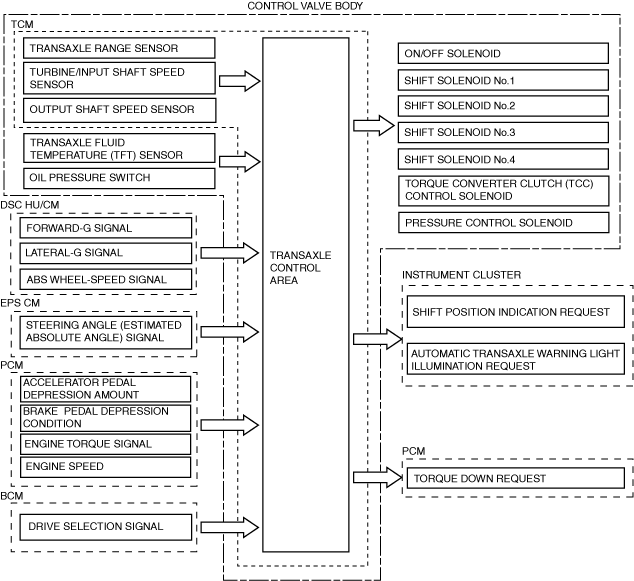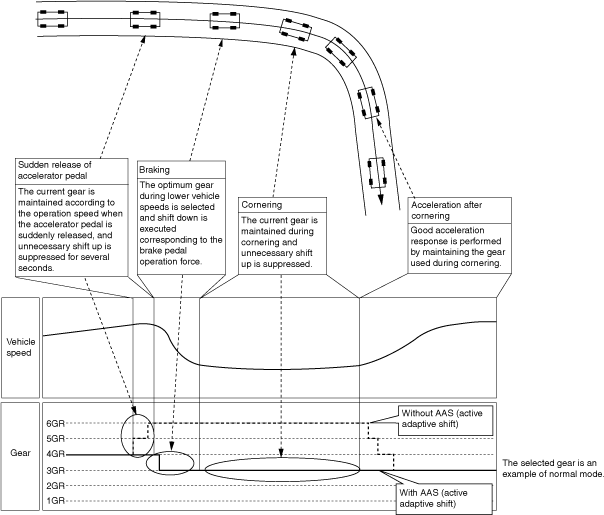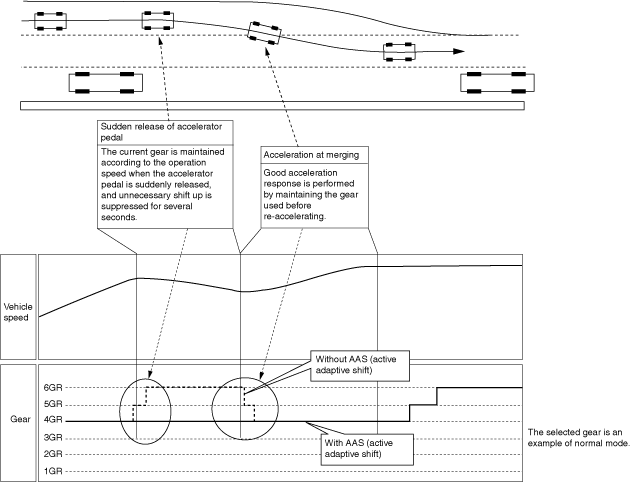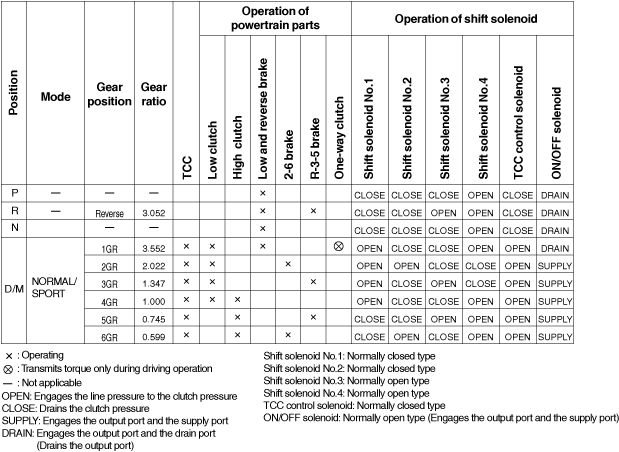SHIFT POINT CONTROL (AUTOMATIC SHIFT CONTROL) [ET6A-EL (US)]
SHIFT POINT CONTROL (AUTOMATIC SHIFT CONTROL) [ET6A-EL (US)]
SM2565412
id0517n13621x5
Outline
Construction
am3zzn00008168
|
Operation
Driving range determination
-
• If a D position signal is input and an M position signal is not input, the TCM implements auto shift control.
Driving mode determination
-
• Normal mode and SPORT mode can be selected using the drive selection switch and the following modes are switched automatically based on the driving conditions in conjunction with normal mode/SPORT mode.
-
― AAS (Active Adaptive Shift) mode: Automatically controls the optimum shift point according to the road conditions and the driver operation.― High ATF temperature mode: When the ATF temperature rises to a high temperature, the engine torque is restricted so that the increase in ATF temperature is suppressed to protect the transaxle.― Low engine coolant temperature mode: If the engine coolant temperature is low, a gear lower than when in normal mode is selected.
-
-
AAS (Active Adaptive Shift) mode operation
-
• Accelerator pedal fully closed suddenly and returned
-
― When the accelerator pedal is fully closed and returned at a certain speed or more, shift-up is inhibited for specified time to improve speed control and acceleration performance.
• Brake is strongly depressed-
― When decelerating at a certain speed or more, a lower gear is selected so that acceleration is performed smoothly.― During a shift change with the brake pedal depressed firmly, blipping control (synchronization to engine speed) is performed to shorten the shifting time.― The shift down control using the brakes may not operate under cold temperature condition.― When driving on slippery roads such as snow covered roads, the shift down control using the brakes may not operate.
• When cornering-
― While cornering at a turn with a radius of less than a specified value, shift up is suppressed to improve vehicle speed performance while cornering and acceleration performance after cornering.
• During drive in a high-altitude area-
― While driving in a high-altitude area, gears are selected appropriate to the driving conditions for driving comfort.
• During ascent-
― While ascending a slope of a certain grade or more, slope mode control prevents unnecessary shift-up by maintaining the appropriate gear.
• During descent-
― While descending a slope of a certain grade or more and depressing the brake pedal, the gears are appropriately shifted down according to the estimated slope angle for effective use of engine braking. As a result, frequent brake pedal operation is reduced.
-
-
Note
-
• When SPORT mode is selected, the AAS selects a lower gear compared to when normal mode is selected, and maintains it for a longer period of time.
-
AAS (active adaptive shift) operation scenario and effect
-
• The AAS (active adaptive shift) is a mode which estimates the driving environment and driver’s intentions according to the vehicle driving conditions and the driver’s operations, and selects the optimum gear for driving.
-
Ex.1: Cornering
-
― During cornering, shift up is suppressed to improve acceleration performance after cornering.
 ac5uun00002955
ac5uun00002955
-
Ex. 2) Merging onto high speed expressways
-
― In a scenario such as temporarily decelerating while merging onto a high speed expressway, shift up is suppressed directly afterwards to improve acceleration performance.
 ac5uun00002956
ac5uun00002956
-
Automatic transaxle operation chart
am3zzn00007412
|



